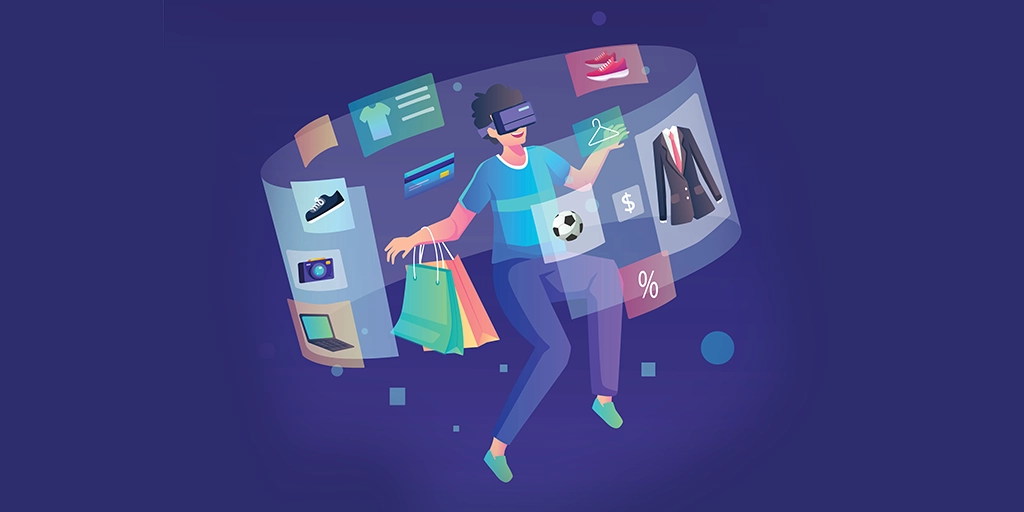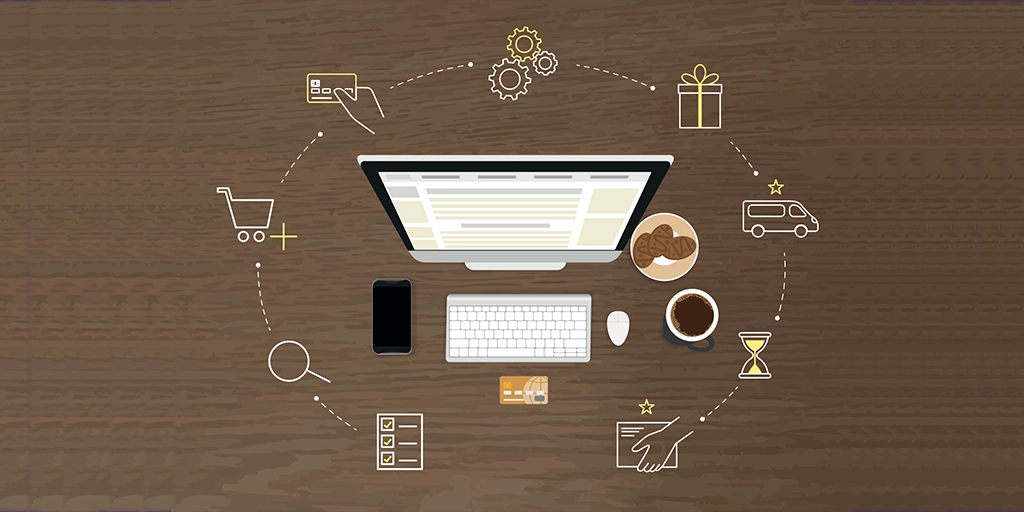Now and then, a revolutionary trend emerges in the digital realm that completely changes the way we conduct business. In the vibrant world of eCommerce, that trend is "Headless Commerce." An innovation that's more than just a buzzword, Headless Commerce has taken the industry by storm, and it's not hard to see why.
Headless Commerce refers to a structure where the front-end presentation layer of a website is decoupled from the back-end functionalities, such as inventory management, customer data, and order fulfillment. Headless Commerce allows businesses to customize and innovate like never before by breaking away from the traditional, intertwined eCommerce platform.
As businesses realize the necessity of delivering unique, seamless digital experiences to their customers, they are increasingly switching from traditional platforms to a Headless Commerce approach. And it's not just the early adopters or tech-forward companies making the switch—Headless Commerce is witnessing widespread acceptance, becoming the 'new normal' in digital commerce.
This post delves deep into the benefits of Headless Commerce, from customization and improved performance to scalability, future-proofing, and beyond. By the end, you'll understand why businesses are increasingly embracing this new approach and whether it could be the right move for your business.
1. Greater Flexibility and Customization
In today's dynamic digital marketplace, the ability to tailor and adapt your eCommerce platform to meet specific business needs and customer expectations is not just an advantage—it's a necessity. This is where the concept of Headless Commerce truly shines.
Traditional eCommerce platforms often come with predefined front-end templates, which, while convenient, can limit creativity and differentiation. Businesses are essentially 'locked-in' to a specific structure, making it difficult to provide a unique customer experience or quickly adapt to new trends.
With Headless Commerce, the front-end presentation layer operates independently from the back-end functionalities. This decoupling offers unprecedented flexibility—allowing businesses to design and redesign the user interface without affecting back-end operations. Moreover, it will enable leveraging cutting-edge front-end technologies to deliver superior page load speeds, mobile accessibility, and smooth user experiences.
Whether crafting a unique user experience, designing a holiday-specific storefront, or tailoring product displays for specific customer segments—everything becomes more feasible and straightforward with Headless Commerce. You can experiment with different layouts, introduce new features, or test unique user journeys without the need to overhaul your entire platform or disrupt your back-end processes.
This level of flexibility isn't just about aesthetics or user experience—it's about keeping pace with a fast-changing market. Consumer trends, design standards, and technology can shift rapidly, and businesses need an eCommerce platform that can adapt just as quickly.
In essence, Headless Commerce allows businesses to create more engaging and personalized shopping experiences and equips them with the agility to stay ahead in the ever-evolving digital commerce landscape.
2. Improved Website Performance
Imagine walking into a store only to find yourself waiting at the entrance while an employee retrieves each item you want to see. Not the most efficient or satisfying shopping experience, right? Well, the same principle applies online. In the fast-paced world of eCommerce, a website's speed and responsiveness are as crucial as the quality of the products on offer.
Studies show that a one-second page load time delay can result in a 7% conversion loss. That's similar to a physical store losing seven out of every hundred customers because they had to wait at the door. It's clear then that if your website isn't fast, you're likely losing customers and revenue.
Headless Commerce offers an impressive solution to this issue. Think of it like having a dedicated employee for each customer in your store, all able to retrieve items simultaneously. By separating the front end (the part your customers see) and the back end (the 'behind-the-scenes' operations), each can operate optimally without being slowed down by the other.
This separation means your site's user interface isn't tied to the speed of your eCommerce platform's server response times. Instead, it can run separately and fully utilize new edge technology and Content Delivery Networks (CDNs). This combination is like having mini-warehouses (servers) scattered worldwide, each containing your website's information. This allows your website to load content closer to the user's location and significantly improves page load times.
Moreover, with Headless Commerce, you can leverage the power of modern front-end technologies like React or Vue.js. These technologies are the eCommerce equivalent of high-performance sports cars—known for their speed, efficiency, and ability to deliver a smooth and responsive ride (or, in this case, user experience).
Headless Commerce also inherently supports the development of Progressive Web Apps (PWAs). Imagine if your website behaved just like a mobile app, providing a seamless, app-like shopping experience right in the user's browser— that's what PWAs offer. They load instantly and ensure a reliable and fast user experience on mobile devices, increasingly becoming the favorite shopping channel for many consumers.
Lastly, consider peak shopping periods, like Black Friday or Cyber Monday. Traditional eCommerce platforms can struggle with increased traffic, much like a small store might work with a sudden influx of customers. In contrast, Headless Commerce architectures are designed to scale and handle high-traffic situations, ensuring your eCommerce site stays up and running even when customer demand is at its peak.
So, Headless Commerce is much like having a well-staffed, high-performing, and significant store ready to provide fast and efficient service to every customer, no matter where they are or how many of them arrive at once. In the digital world, it's a driving force for improved website performance, meeting modern eCommerce's need for speed, responsiveness, and scalability.
3. Scalability and Future-Proofing
Picture a small store that suddenly experiences a surge in popularity. They're forced to turn people away without the space or staff to handle an influx of customers. Now imagine an innovative store design that can effortlessly expand or contract based on demand, ensuring every customer is served promptly. That's the kind of scalability we're talking about when we refer to Headless Commerce.
With traditional eCommerce platforms, growing your business often means investing significant time and resources into upgrading or customizing your platform to handle increased traffic or add new features. This can be likened to a store undergoing continuous construction work to accommodate more customers - disruptive and expensive.
However, Headless Commerce operates differently. Due to its decoupled nature, you can independently scale your front-end and back-end systems. Need to handle more traffic? Simply scale up your front-end resources. Are you expanding your product line or entering new markets? Your back end can scale accordingly, all without disrupting your front-end user experience.
The flexibility of Headless Commerce also offers a degree of future-proofing. In the ever-evolving world of digital commerce, technologies, and customer expectations are constantly changing. Being tied to a rigid, traditional eCommerce platform is like a store that can't rearrange its layout or update its décor - it's bound to fall out of favor.
On the other hand, with Headless Commerce, you can continually adopt new technologies and trends on the front end, all while your back-end operations run undisturbed. It's like having a store that can instantaneously change its layout, décor, or even the technology it uses for transactions, to keep up with the latest trends and customer expectations.
Moreover, the "API-first" approach of Headless Commerce means you can easily integrate with other systems (like CRM, ERP, PIM), offering the potential to create a seamless ecosystem of applications around your eCommerce platform. It's akin to a store easily connecting with local suppliers, delivery services, and marketing agencies, creating a robust network that enhances its offerings and customer experience.
The scalability and future-proofing offered by Headless Commerce enable businesses to grow and adapt in an ever-changing digital landscape. Much like a well-equipped, adaptable store, it's designed to evolve with your business, ensuring you're always ready for whatever the future of eCommerce might bring.
4. Better Control Over Updates and Iterations
Think of traditional eCommerce platforms as a pre-furnished apartment. It comes with all the necessary amenities, but there's a significant drawback: you can't change much without approval from the landlord or much hassle. Need to repaint the walls or change the kitchen fixtures? It could be a lengthy and cumbersome process.
Headless Commerce, on the other hand, is like owning your home. You have complete control over renovations and updates—no need to wait for a third party to give you the green light. You can make alterations that suit your needs and preferences at your own pace.
With Headless Commerce, updates and iterations can be rolled out on the front end without impacting the back end and vice versa. This means businesses can make improvements and implement new features rapidly without disrupting their operations.
Have you got an idea for a new user interface design? Want to test a new product recommendation algorithm? These changes can be made directly on the front end. At the same time, the back end, housing your critical operational data and business logic, remains untouched and secure.
Moreover, by decoupling the front and back ends, businesses can adopt a microservices architecture—breaking down each functionality into separate, smaller services. Each of these services can be updated individually without affecting the others. It's akin to renovating your kitchen without the risk of accidentally knocking down a wall in your living room.
This granular control over updates and iterations fosters an environment of constant improvement and innovation. You can experiment more freely, test new ideas, and quickly adapt your platform to meet evolving market trends or customer preferences.
Headless Commerce gives businesses the freedom and flexibility to continually enhance their eCommerce platform, delivering the best possible experience for their customers. It's about maintaining a state-of-the-art online store that can adapt and evolve according to your strategic direction and customer feedback.
In Summary
In a world where customer expectations for online shopping are higher than ever, businesses must adapt and innovate to stay competitive. Headless Commerce presents a powerful way to do this. By separating the front-end customer experience from the back-end operations, businesses can provide a faster, smoother, and more responsive online shopping experience.
Headless Commerce is like owning a fully customizable store where you control every aspect of the customer experience. It allows businesses to respond swiftly to changing trends, scale operations efficiently, and roll out updates without causing disruptions.
But while Headless Commerce brings impressive benefits, it's not a one-size-fits-all solution. Each business has unique needs and circumstances. Adopting a Headless Commerce approach requires a clear understanding of your business goals, a strategic implementation plan, and perhaps most importantly, an organizational readiness for change.
As with any important business decision, it's critical to conduct a thorough analysis and consider all factors before jumping in. Look at the experiences of businesses like yours, evaluate the potential return on investment, and consider how ready your organization is for change.
If you're a business leader considering Headless Commerce, take the time to learn as much as possible about it, and don't be afraid to ask tough questions. As we've explored in this post, the benefits could be substantial, but it's essential to approach this decision with a clear understanding and solid strategy.
Remember, the ultimate goal is not just to follow a trend but to enhance the shopping experience for your customers and, in doing so, grow your business. In an increasingly digital world, staying ahead of the curve in eCommerce is more critical than ever. So, whether you go headless or choose a different path, the key is innovating and striving for the best possible customer experience.
As you continue your journey in understanding and exploring Headless Commerce, subscribe to our newsletter for more insights and updates in this space.
Share this
You May Also Like
These Related Stories

6 Crucial Factors to Consider When Evaluating Headless Commerce

Headless Commerce 101: An Introduction to the Future of eCommerce


